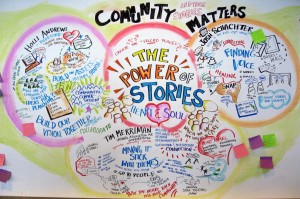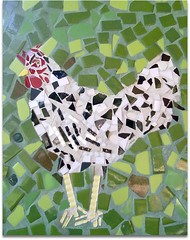 I’m in Denver this week at the “Community Matters” conference from the Orton Family Foundation.
I’m in Denver this week at the “Community Matters” conference from the Orton Family Foundation.
This is a new network for me: town planners, small town advocates, and people who care about the heart and soul of their community. I’m engrossed in getting to know their work and them. The intellect and attention to detail of the planning perspective melded with the recognition of the power of relationship, connection, passion and emotion is a powerful mix. In fact “powerful” is a word I’ve been hearing a lot.
For some reason, many of the people I have conversed with are also paying attention to transitions – to their own, their organizations and their communities. I’m quite taken by this pattern and wonder why it has show up so vividly for me here, at this conference, at this time. Something to think about.
My roles here are delightfully diverse, even if the switch ups make me dizzy here in the “mile high” city. Tuesday I facilitated an all day workshop on “Online Media and Your Neighbors.” We were two town planners, a journalist and online neighborhood community facilitator, a deep thinker on communities for elders and the differently abled, and a community organization “jill of all trades.” We learned with and from each other about how online tools can be of value (or be avoided) for local communities. I am now thinking more about the intersection of technology in elder communities — mmmm!
Yesterday I did small scale graphic recording for the opening plenary, large scale graphic recording for for the session on “The Power of Stories” (Image above) facilitated by my dear friend and conspirator, Barbara Ganley. Tim Merriman, Holli Andrews and Josh Schachte (how could you not love a man who loves pie!) were terrific – telling real stories about the real power of stories. There are two other panels from the graphic on questions and tips for storytelling that you might find valuable here and here.
But it doesn’t stop there. Then I facilitated two 30-minute “Tool Flash Mobs” – one on Twitter and one on YouTube – to provide a brief introduction and practice with social media. In the Twitter session one woman talked about a very unusual Twitter adoption challenge. Her puppet, Suzie, needed an account. So I invited the two of them for a quick peer-to-peer consult later in the day. Talk about mind-blowing. More on that later…
In the YouTube session I decided to go out on a limb (as usual) and suggest that we not only learn about online video in a half hour, but to actually make, upload and view one. Yup, we did it. Take a peek:
The takeaway for me from the two flash mob sessions were:
- When introducing a social media tool in a community context, think about the inflow and outflow aspects. Inflow: listening, learning, getting ideas, bringing diversity into a local community. Outflow: sharing knowledge, disseminating information, publicizing community events, helping the world see (and perhaps validate) good community work that may not be perceived as so important because it is so “everyday” for the community itself.
- Think small, time-delimited experiments with measurable outputs so that we can think strategically about what “social media” work we want to add to our lives, and what value can accrue to our communities.
- Remind ourselves we all don’t have to learn and work with everytool. In fact, imagine what it would be like if we ALL tweeted! NOOOOO!
Those sessions all continued informally so when I looked up it was after 5:30 and I ran off to a dinner with friends. ZOOM! Had a great dinner/conversation then walked back, did a little prep and crashed.
So here I am today – a graphic recording of Chip Heath’s keynote! WOW, I’ve been practicing drawing elephants. Tomorrow I record Frances Moore Lappe, so lots of excitement, plus one more Flash Mob and pinch-hit moderating a panel. Off and running!

 (Yes, I’m popping my head up after a month of heavy work and little inclination to stay at my computer as summer finally arrived in Seattle.)
(Yes, I’m popping my head up after a month of heavy work and little inclination to stay at my computer as summer finally arrived in Seattle.)